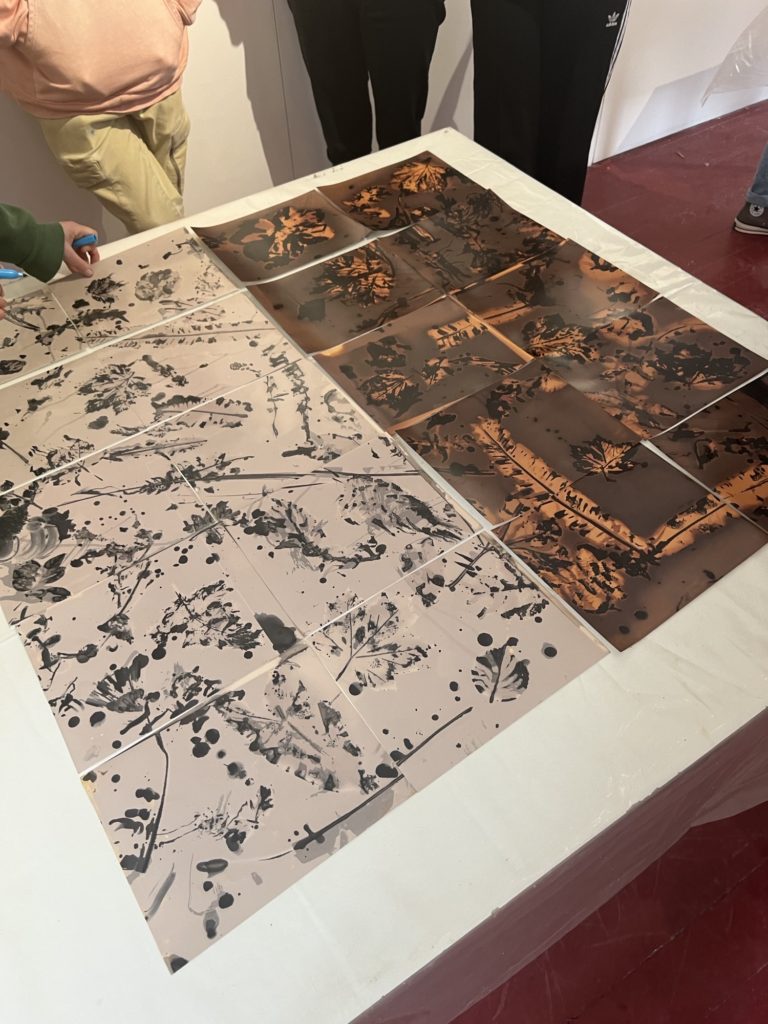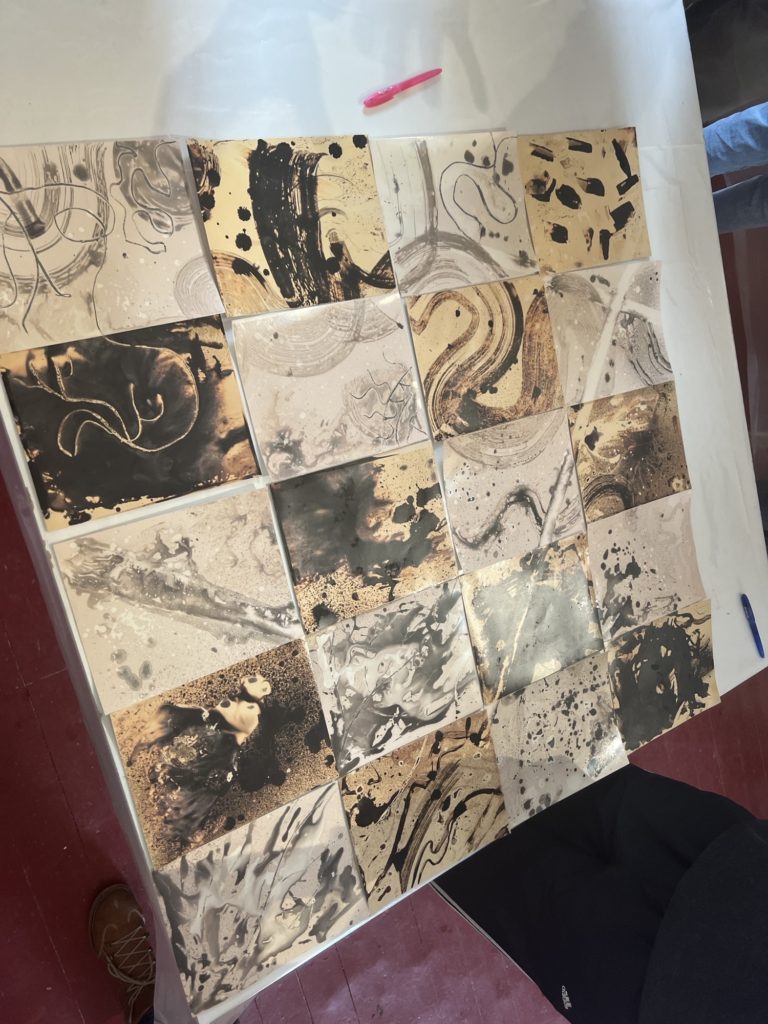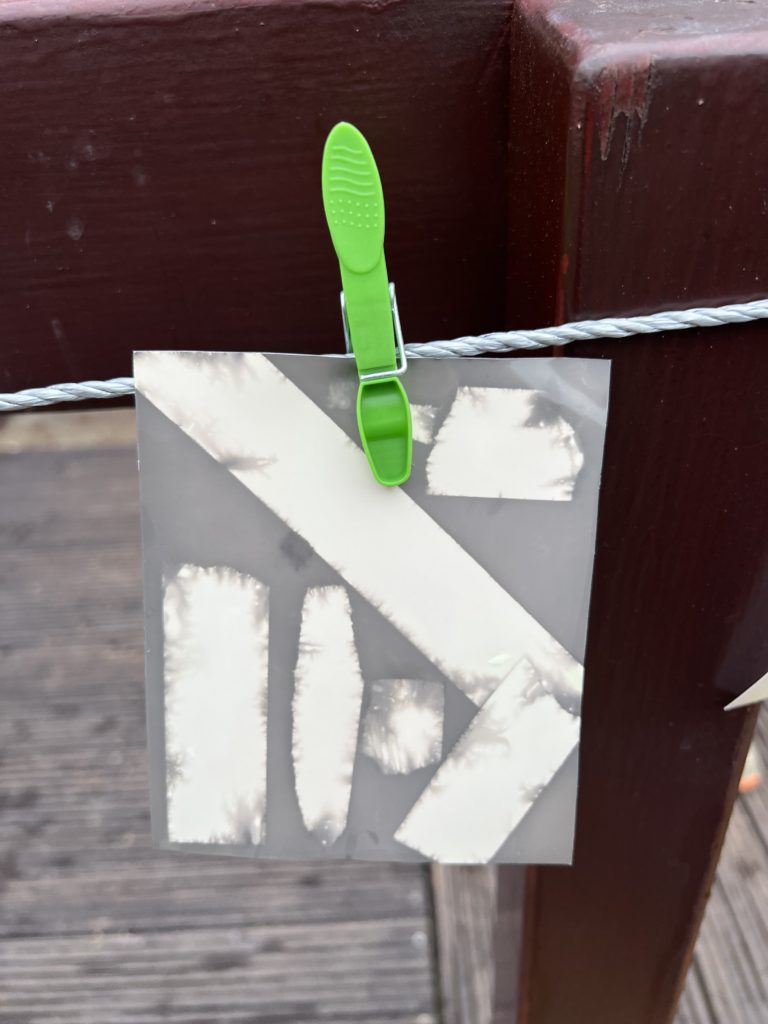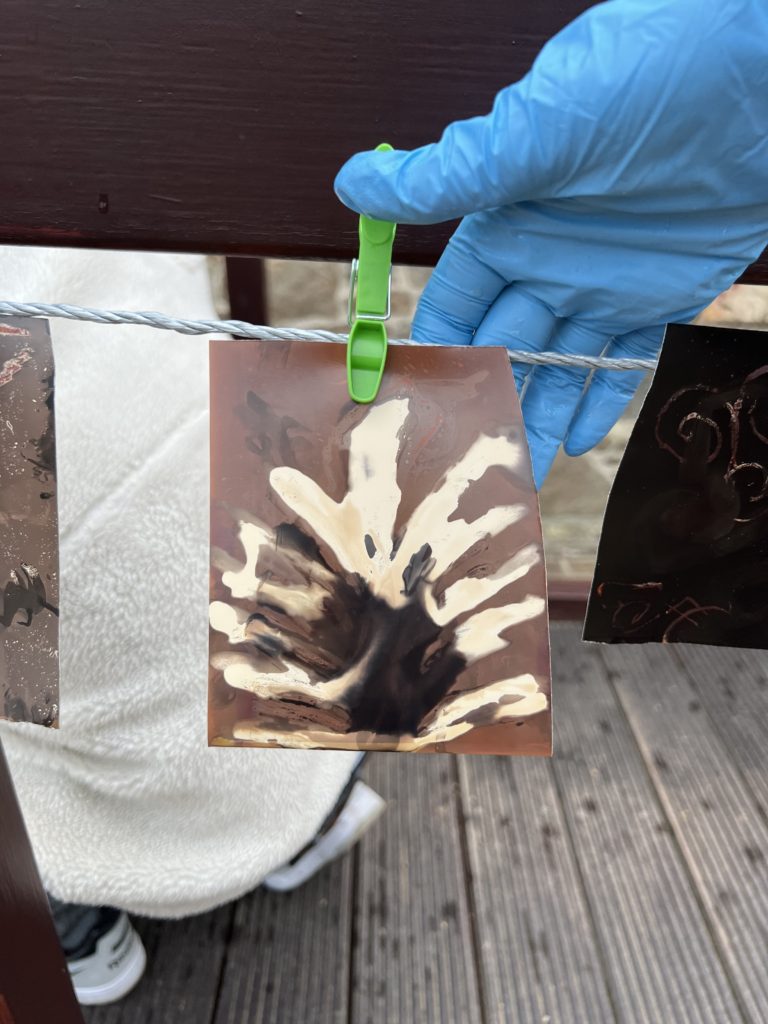ARTIST 1: HANNAH FLETCHER
The Sustainable Darkroom is an artist run research, training and mutual learning community. They are developing low-toxicity chemistries and practices in analogue photography, in order to use less damaging products.
Hannah Fletcher is the founder of this project, The Sustainable Darkroom, and began it in 2019. During this one day workshop with Fletcher she revealed how she creates this sustainable products to develop photographs.
ARTIST 2: ALEXANDER MOURANT
Alexander Mourant is an artist, educator and writer based in London. The work of Alexander Mourant embraces autobiography, literature and reference-based thinking, to create narratives that question the relationship between the body and the photographic medium.
Mourant also works with Fletcher on this Sustainable Darkroom as the subordinate/assistant photographer. They both try to create a sustainable way to create art and photography.
WORKSHOP: METHOD CHEMIGRAMS/SUSTAINABLE DARKROOM
Arriving at Greve de Lecq Hannah Fletcher gave a overview of the project, The Sustainable Darkroom, in which she explained how she has managed to create renewable ways to develop art and photography.
As a group we went down to the beach to collect seaweed, which Fletcher said would be used as a natural developer. Yet there is a specific criteria the seaweed needs to meet, it needed to include the bubble bits on the length of the seaweed. Furthermore then we went into Greve de Lecq woods to pick up leaves to create chemigrams, the leaves would be used as a print on the image.
WHAT IS A CHEMIGRAM?
A chemigram is made by painting with chemicals on photographic paper. It requires the use of materials from silver halide-based photography (light-sensitive paper, developer, and fixer).



In order to do our chemigrams sustainably, from the collected seaweed we boiled it for 10minutes in order to get the minerals we needed for the natural developer. Furthermore we mixed ‘vitamin C’ powder and a chemical to create the fixer. We used tools such as pipets, spray bottles, wax and sponges to create different designs. We used the developer and the mixer to create different colours, we also used this process with the leaves and flattened them.
MY RESPONSE TO CHEMIGRAMS:







